10.1 Footway & highway design
The footway should be designed to withstand heavy vehicles.

BACK TO TOP
10.2 Footway paving. Maintenance
Traditional paving slabs in better quality urban streets were often a lime stone, such as York stone.
If this is considered too expensive, a similar large scale can be achieved by using concrete slabs.
They are usually laid on a sand base, which is satisfactory for foot traffic. But if heavy vehicles drive over the pavement, the sand base, especially if it has washed away, does not give the slabs sufficient support and so the slabs break.
To prevent this, bollards are sometimes put along the pavement edge to protect it. But the bollards reduce the width of the pavement.
Concrete strips can withstand the extra weight, but break up the visual continuity of the pavement.
A strengthened base of concrete, under the vulnerable slabs, give the slabs better support.
Alternatively, steel reinforced slabs can be used at the edge of the pavement, continuing the layout pattern of the other slabs, to give the appearance of a uniform neat surface.
Traditional York stone pavement
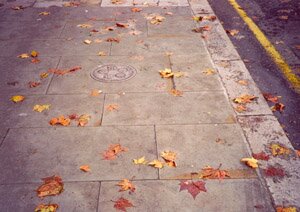
Large concrete slabs
Bollards at pavement edge
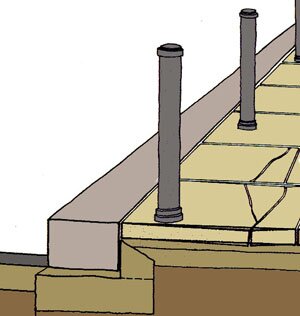
Concrete base under edge slabs
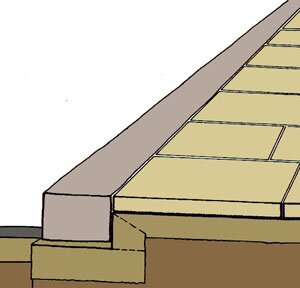
Strengthened slabs continuing layout pattern benefit from a concrete strip at pavement edge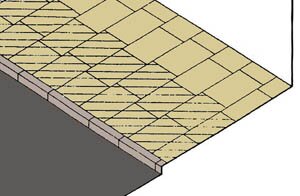
Special sites will suit other surface materials

BACK TO TOP
10.3 Lighting & security cameras
Public lighting can be considered from two view points.
1. The appearance of the lighting equipment.
2. The standard and quality of the light that is emitted.
Historic styles of lighting equipment, such as lamp posts should ideally resemble as closely as possible the design that would have been contemporary with adjacent historic buildings and street furniture.
Modern and elegant lighting is suitable to be placed near modern buildings.




Street lights can be fixed to buildings to reduce clutter on the pavement. Each light fitting should be positioned exactly so that it respects the style of the architecture of the building or its symmetry. Cable ducts and equipment should be out of sight.
New street lighting on highways is usually designed and installed to the current British Standard European Norm (ESEN) for each category of road. Though there is some flexibility in their use and they may need to be varied if there is an environmental justification.
Lighting types:
Low pressure (SOX) has a yellow colour
High pressure sodium (SON) and
Ceramic discharge metal halide (CDM) a white colour
Less common are:
Gas and incandescent electric, in some historic locations
Fluorescent and more recently Light Emitting Diode (LED)
Street security cameras
Security cameras are now extremely common. The free standing systems often cause obstructions on pavements and of course clutter. Cameras should ideally be fixed unobtrusively to buildings or existing structures, with their cables and control equipment located out of sight.
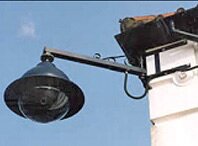
Speed cameras are more difficult to hide as some highway authorities feel that they should be easily seen.
BACK TO TOP
10.4 Local materials
Traditionally all paving materials would have been sourced locally, usually at the local quarry.
This would have given each locality a distinct and almost unique character which reflected the huge variety in the geology across the country.
Today most paving materials are sourced from large national deposits and increasingly from abroad. Thus if a local character is to be retained it has to be carried out by carefully selecting a very limited range of materials that would emulate what was the local material, even if in fact the source was not local.
However the quality and style of applying materials can reflect local traditions. Specifications for workmanship and detail need to refer to existing historic examples in the locality.
| Some authorities concentrate on creating an image of quality by restricting the range of materials to be used and by insisting on high standards of workmanship. |
The “Westminster Way”
street design guide, by Westminster City Council. |
|
|
Certain materials are not used because they are considered visually inappropriate: Concrete paving of a strong colour, 100mm x 200mm chamfered edge concrete “bricks”, 400mm x 400mm concrete slabs in “stack” bond.
Materials that are to be used are: 600mm x 750mm and 600mm x 600mm concrete slabs laid exactly at right angles to the kerb in stretcher bond, with a flush finished pointed joint between the slabs of some 6 to 8mm.
Where there is a likelihood of overrun damage steel reinforced concrete slabs are used, within the overall bond of the remaining slabs.
|
BACK TO TOP
10.5 Cyclists
Cycling is seen as a flexible, sustainable and healthy alternative to cars for shorter journeys and attracts national funding and local authority concern.
It therefore often has separate allocated funds for improvement projects, which need to be carefully integrated into the overall scene. Though it seldom done successfully.
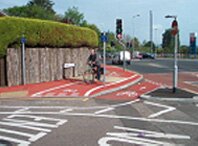
A cycle is legally considered to be a vehicle with an on road design speed of some 15mph. It has the size and flexibility of movement similar to a pedestrian and as such cyclists benefit from a people oriented environment.
| The need for lots of “special cycle” facilities is questioned as a good use of time and budget, Cycling England. The best facility on a road for cyclists would be a general speed limit of 20mph or lower. This gives cyclists complete freedom of movement. Some authorities allow cyclists to cycle past a no entry sign. The sign has an additional “except cycles” plate. |
 |
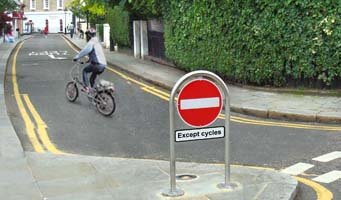
BACK TO TOP

